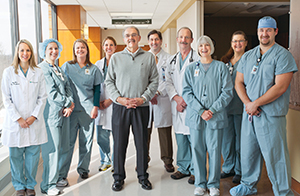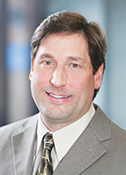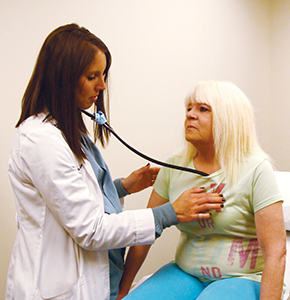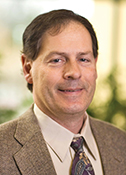By BETSY TAYLOR
With millions of Americans newly insured in recent years under the Affordable Care Act, with shortages of primary care physicians nationally and with difficulties in recruiting specialists in some rural areas, a team approach involving advanced practitioners is one solution to improve patient access to care.
Like many health systems across the U.S., Essentia Health, headquartered in Duluth, Minn., is adding nurse practitioners and physician assistants to health care teams led by physicians. The addition of such teams has been a strategic initiative for Essentia Health during fiscal years 2014 and 2015. Health care providers and administrators with the system say they've found the team approach frees up more appointments so patients can get one quickly, and it facilitates access to medical specialties, especially in areas where it can be difficult to recruit more than one specialist physician. And patients often say they like the team approach because there are two or more clinicians in a health care setting who can respond to their medical needs or answer their questions.

In this photo used by Essentia Health in its editorial content to highlight its team-based approach, patient Mark Jurchen is flanked by care team members at the Brainerd Lakes Heart and Vascular Center at Essentia Health – St. Joseph's Medical Center in Minnesota. From left, Nurse Practitioner Rebecca Wirtz, Radiology Technologist Kara Staniger, Nurse Martha Jendro, Nurse Practitioner Anne Kvamme, patient Mark Jurchen, Cardiologist Dr. Mike Rich, Interventional Cardiologist Dr. Mark Johnson, Nurse Jane Curran, Radiology Technologist Melinda Garnhard, and Cardiovascular Invasive Specialist Brian Lahr.
Staffing up
According to counts provided by the system, Essentia Health hired more than 200 nurse practitioners and physician assistants in fiscal 2014 and to date in fiscal 2015. This compares to 38 advanced practice hires in fiscal 2013 and 50 in fiscal 2012.
Essentia Health has 66 clinics and 17 hospitals in Minnesota, Wisconsin, North Dakota and Idaho.
Collaborative approach
Essentia Health cardiologist Dr. Mike Rich is part of a care team at Brainerd Lakes Heart and Vascular Center, located at Essentia Health – St. Joseph's Medical Center, which is the largest hospital in north-central Minnesota. He calls the team model "a very effective way to provide care."
The vascular center is staffed by three cardiologists and two nurse practitioners. Rich and nurse practitioner Anne Kvamme said patients usually see the same doctor and nurse practitioner regularly. Doctor and nurse practitioner are in frequent communication throughout the day about patients. Sometimes, patients see them both during the same visit, and sometimes just one or the other. The cardiologist sees patients with high-risk, acute conditions.
Kvamme said part of her job involves consulting with many of the patients before Rich does, looking up their medical history and assessing their current health status.

Rich
Patients with more acute conditions may start by seeing Rich and then see Kvamme more often for follow-up appointments or checkups. Kvamme said patients like the team approach. "If they see both of us, they're getting two for one."
Rich said he thinks having two clinicians involved makes it less likely that something might get missed or overlooked in a patient's care. It also frees up his time to focus on new patients.
Booming professions
Nurse practitioners are registered nurses who have earned master's or doctorate degrees in nursing. Physician assistants complete a master's degree program. Both advanced practitioners complete clinical training and pass national certifying examinations.

Cardiology Nurse Practitioner Anne Kvamme conducts a checkup on patient Bonnie Bourassa of Brainerd, Minn., during Bourassa's recent visit to the Brainerd Lakes Heart and Vascular Center.
Ken P. Miller, president of the American Association of Nurse Practitioners, said in 1998 there were 58,000 licensed nurse practitioners in the United States. By 2014, that number was up to 205,000. The American Academy of Physician Assistants, the professional society for physician assistants, says there are about 100,000 physician assistants in the U.S. It says the profession has increased by more than 200 percent over the last decade.
The Bureau of Labor Statistics predicts both professions will continue to grow at a rapid clip. The number of physician assistant jobs is projected to grow 38 percent from 2012 to 2022; the number of employed advanced practice registered nurses, including nurse practitioners, is expected to grow 31 percent during that same time frame. For comparison, the bureau predicts an 11 percent growth rate for all occupations from 2012 to 2022.
Miller said in 20 states and in Washington, D.C., nurse practitioners have full scope of practice, which means they don't have to be supervised by a physician to assess, diagnose, treat, prescribe medication or interpret tests. He said in all 50 states, nurse practitioners have the authority to prescribe medications, though Florida law does not allow them to prescribe narcotics. According to The American Academy of Physician Assistants, physician assistants can "obtain medical histories, conduct physical exams, diagnose and treat illnesses, order and interpret tests, perform medical procedures like joint injections, counsel patients on preventive health care, assist in surgery, write prescriptions, and make rounds in nursing homes and hospitals, among many other medical services."
Managing demand
The team at Brainerd Lakes Heart and Vascular Center, which added its second nurse practitioner in 2013 and third cardiologist in 2014, has managed double digit percent increases in initial consultations and follow-up appointments year over year since 2012. Consultations and follow ups are up about 16.5 percent so far this fiscal year. Joseph A. Wendt, operations administrator for hospital-based medical specialties, said "without the team approach between cardiologist and nurse practitioner we would not have been able to sustain this growth."

Palmer
Bill Palmer is regional clinic administrator for Essentia Health in an area that includes St. Joseph's Medical Center in Brainerd, Minn., and 14 surrounding clinics in a roughly 45-mile radius.
Palmer said the team approach is designed to respond to the shifting focus in health care. The old approach to care was episodic, with a provider primarily responding to the complaint that brought a patient to a hospital or clinic. Now, he said Essentia Health is striving to take a much more comprehensive approach to health care. There's greater focus on wellness and preventive care. There's more effort by physicians, nurse practitioners and physician assistants to guide and support patients in management of chronic conditions.
Positive sum game
Patient Bonnie Bourassa, 52, of Brainerd, said she's comfortable being treated by either Rich or Kvamme. She has been a patient at the vascular center for about two years, due to right-side heart failure, which means her heart's pumping power is weaker than normal. "They work as a team," she said of the cardiologist and nurse practitioner. Both Rich and Kvamme have helped educate her about watching her sodium intake, weighing herself regularly to make sure she's not retaining too much water, and exercising more. Her care providers work together "to provide the best care," she said.
Copyright © 2015 by the Catholic Health Association
of the United States
For reprint permission, contact Betty Crosby or call (314) 253-3477.